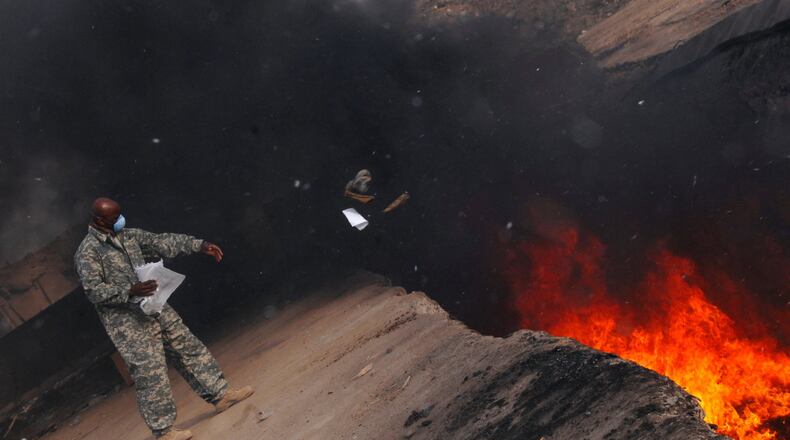• Enrolling servicemembers exposed to toxic airborne chemicals or stationed near an open burn pit in the Airborne Hazards and Open Burn Pit Registry that will monitor and identify the harmful consequences of exposure to burn pits.
• Requiring the Department of Defense to evaluate servicemembers for toxic exposure during routine medical exams and directing the department to share whether each servicemember was stationed near an open-air burn pit
“We have a responsibility to ensure our veterans have the care they need to address the dangers they face while serving this country,” Brown said. “This legislation is a first step toward addressing the unique health needs of veterans exposed to toxic burn pits while serving in Afghanistan and Iraq.”
About 1 of every 13 people in Ohio is a veteran and five of the state’s top 18 counties in veterans population are in Southwest Ohio, ensuring that veterans issues will remain important in this area, according to a comparison with U.S. Census population estimates from 2014.
Brown’s bill has been sponsored by various military and veteran organizations like the Military Officers Association of America, the Wounded Warrior Project and Disabled American Veterans.
Waste products in burn pits include, but are not limited to: chemicals, paint, medical and human waste, metal/aluminum cans, munitions and other unexploded ordnance, petroleum and lubricant products, plastics and Styrofoam, rubber, wood, and discarded food, according to the VA.
Toxins in burn pit smoke may affect the skin, eyes, respiratory and cardiovascular systems, gastrointestinal tract and internal organs, according to the Department of Veteran Affairs. But the department claims that research does not show evidence of long-term health problems from exposure to burn pits.
A spokesman for the Dayton VA said they could not comment on pending legislation about the burn pits. The VA has an Airborne Hazards and Open Burn Pit Registry, which is a registry questionnaire designed to allow current and former military members who served during the 1990-1 Gulf War and in operations in Iraq and Afghanistan to report exposures to airborne hazards.
In total, 165,877 veterans and service members completed and submitted the registry questionnaire between April 25, 2014 and Jan. 7, 2019, according to the VA.
Critics say the federal government needs to do more to protect service members and veteran who were exposed to toxins from burn pits.
“We know from the experience of Vietnam War veterans exposed to Agent Orange that it can be years before the effects begin to manifest and decades before there is scientific consensus linking exposure to specific health conditions and illnesses,” said Disabled American Veterans National Legislative Director Joy Ilem, in a statement.
UNMATCHED COVERAGE
The Dayton Daily News is committed to reporting on veterans issues— work made possible by your subscription. Count on us to bring you the latest and most in-depth military news coverage in Ohio.
About the Author
